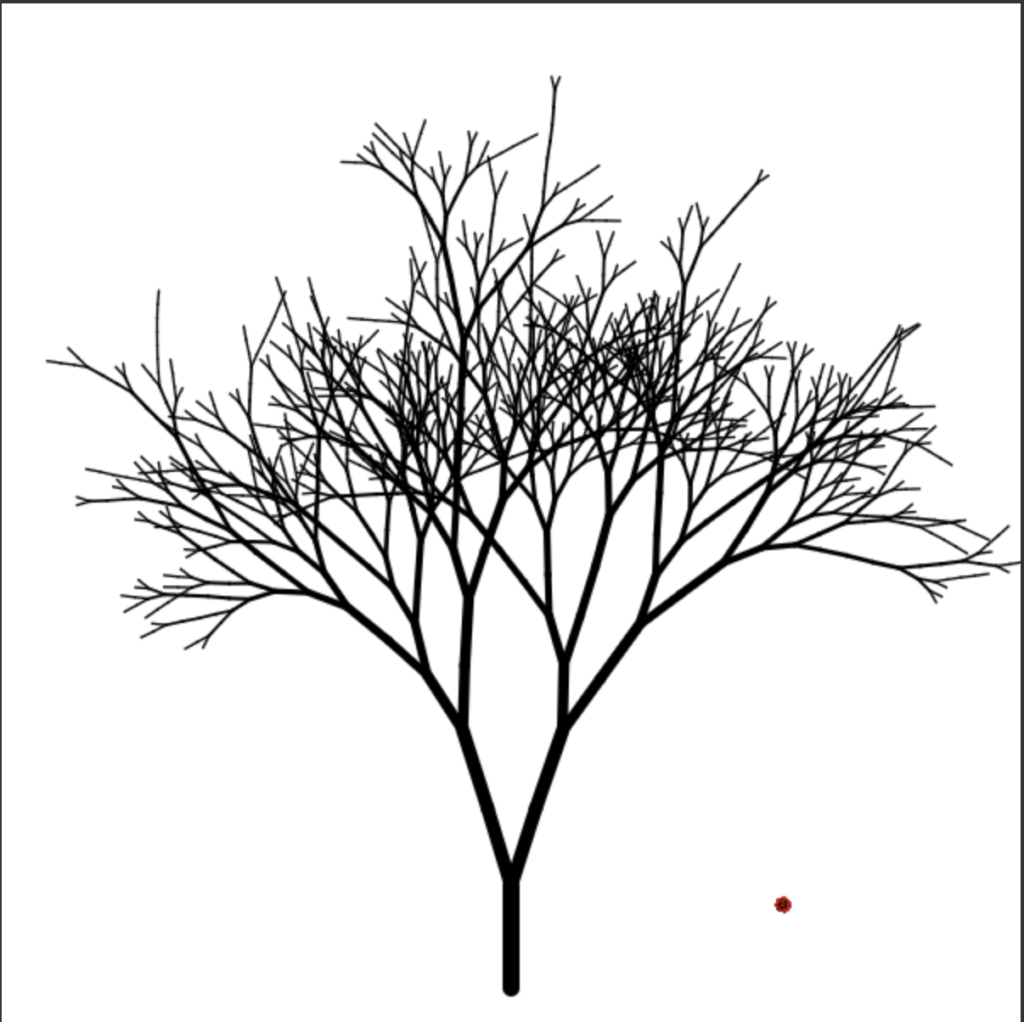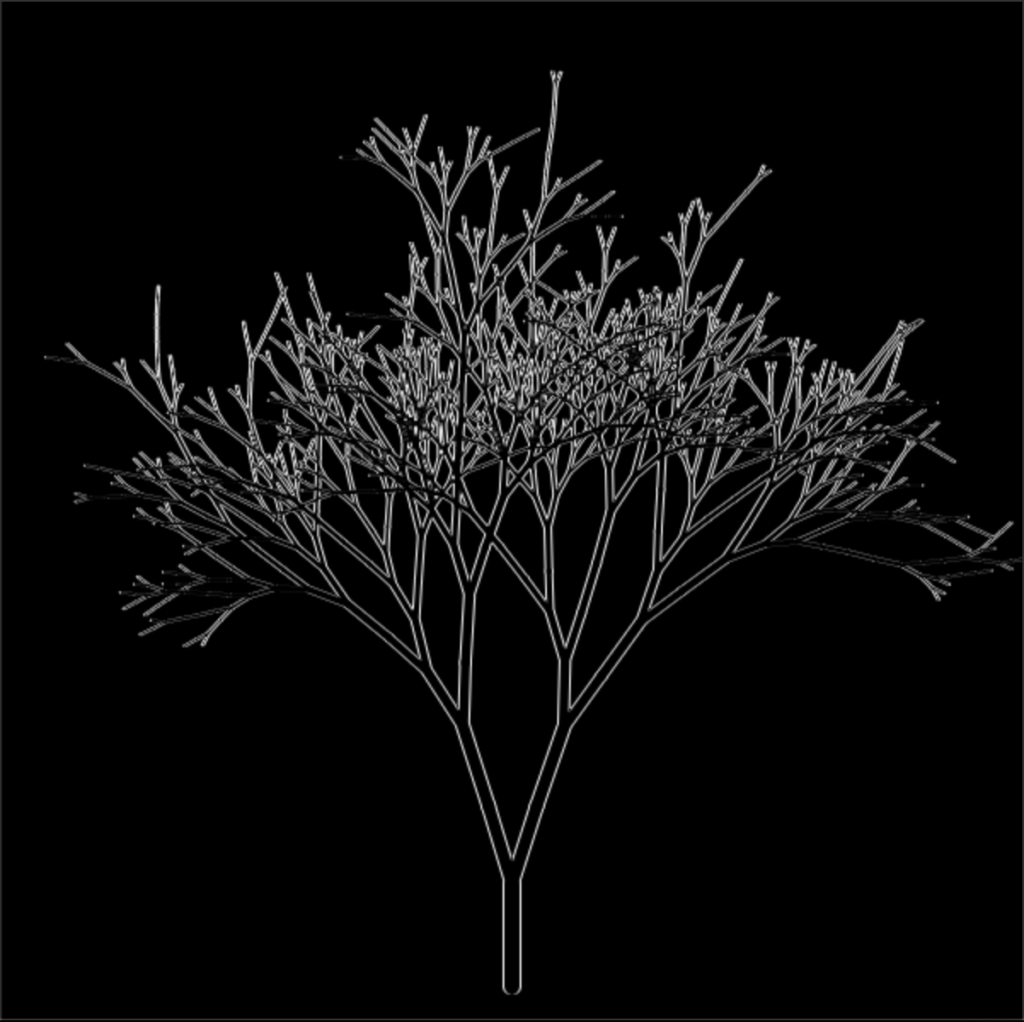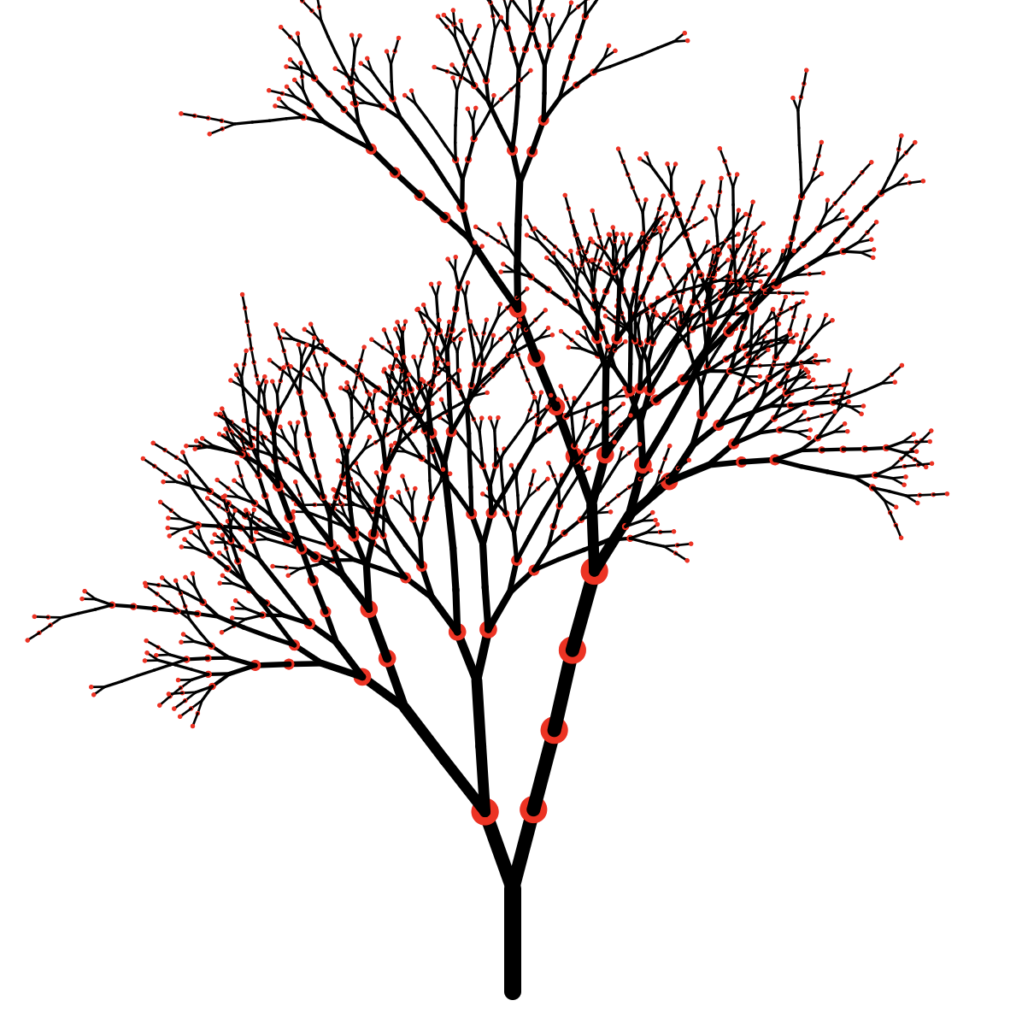For my final, I chose to create a recursive tree that responds to sentiment analysis of personally typed text. For every “positive” word, I wanted the tree to have a flower, and for every “negative” word, I wanted to have a flower disappear.
Before I discuss my process and issues, I would like to state my position on sentiment analysis, which I have included on a file with my cited sources in my final project:
We live in a time where innovation often outpaces critical thought vis a vis the social systems we change, and subsequently, the people we affect. Sentiment analysis is the perfect example of a technology that at first glance is cool, but can and has been utilized to perniciously exacerbate problematic social structures, particularly but not limited to racial discrimination.
I did not create the coding schema that values and devalues certain words based on their perceived positivity. In fact, I take great issue with the rudimentary nature of this schema and find it necessary to communicate that context is what truly determines how one may interpret a given word or phrase. Furthermore, the context of how we choose our words, the history of our phrases, and what they mean in relation to different lived experiences, is imperative to communicating in a manner that serves to diminish the hostility (intentional or not) of our communication.
The greatest struggle of this project was figuring out how to map flowers over the tree. There were a bunch of techniques tried before a true attempt at mapping was executed – the following were two attempts that worked conceptually, though I ended up bringing the latter attempt to “completion” because it was easier to complete in the time that I had to turn in this assignment
Attempt 1
Conceptualized by Cassie Tarakajian and with the assistance of Alden Jones, I attempted to map my recursive tree by “cheating” (in a super complicated way). Essentially, I would:
- In a first animation, generate a recursive tree
- In a second animation, upload the image of the tree, map the pixel positions of the image using edge detection and black pixel recognition arrays, load 50 random pixel positions from these arrays into a JSON file and export that JSON file.
- In a third animation, upload the image of the tree and the JSON file, and use the JSON coordinates to place my flower constructor
I stopped at step 3 due to deadline constraints – I now understand that I need to change step 2 to not make an inverse color image during edge detection.


Attempt 2
With the guidance of Max Da Silva, I developed a recursive tree generated from more complex vector geometry. This made it considerably easier to map the positions and nodes of each branch, to facilitate an easier “random” generation of flowers. I played around with some prototypes before adding the tree to sentiment analysis. These prototypes are linked below.

